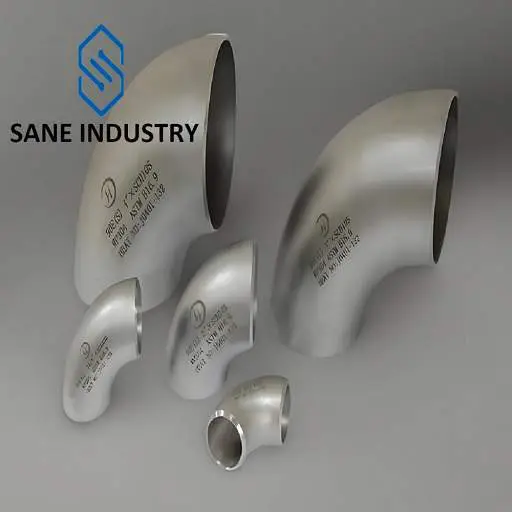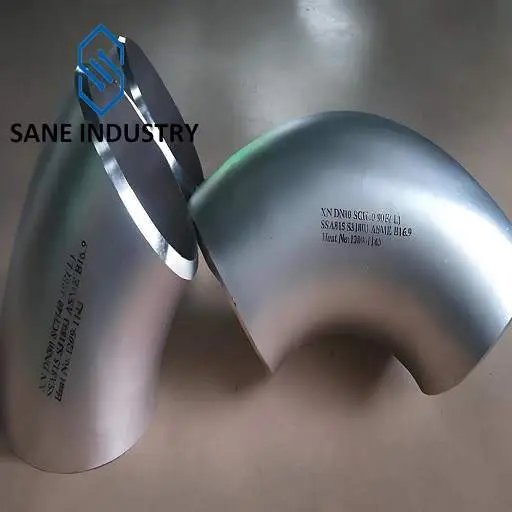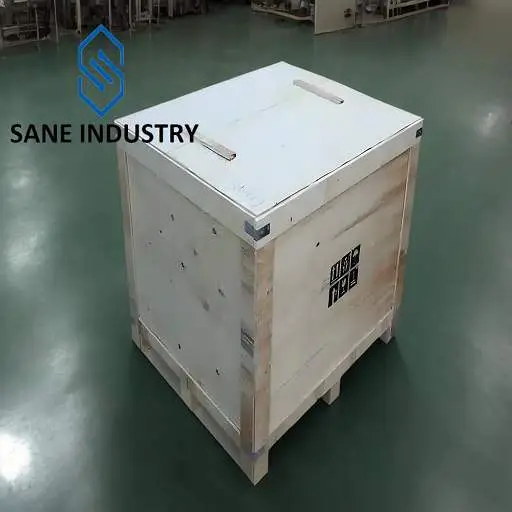What is a Pipe Elbow
A pipe elbow is an essential component in piping systems, designed to alter the direction of fluid flow. Serving as a critical junction, it enables pipelines to navigate around obstacles, conform to spatial constraints, or adapt to specific layout requirements. Its primary function lies in efficiently redirecting the flow of liquids, gases, or slurries while maintaining structural integrity and minimizing pressure loss.
Pipe Elbow Types
- Based on Bend Angle
- 90-Degree Pipe Elbows: Most common for directional changes in plumbing, HVAC, and industrial systems.
- 45-Degree Pipe Elbows: Used for gentler turns, reducing turbulence in high-flow systems.
- 180-Degree Pipe Elbows(Return Bends): Reverse flow direction entirely, often in heating coils or U-shaped configurations.
- Based on Material
- Metallic:
- Stainless Steel Pipe Elbows: Corrosion-resistant for chemical and food processing.
- Carbon Steel Pipe Elbows: High-pressure applications in oil/gas and power plants.
- Copper/Brass Pipe Elbows: Common in residential plumbing and refrigeration.
- Non-Metallic:
- PVC/CPVC Elbows: Lightweight, corrosion-resistant for water and chemical transport.
- HDPE Elbows: Flexible and durable for underground utilities.
- Metallic:
- Based on Connection Method
- Welded Elbows: Permanently fused via butt-welding for high-pressure systems (e.g., ASME B16.9 standards).
- Threaded Elbows: Screw-connected for easy installation in low-pressure plumbing.
- Flanged Elbows: Bolted to pipelines with gaskets for modular assembly in industrial plants.
- Based on Manufacturing Process
- Seamless Elbows: Forged from single metal pieces to eliminate weak points in critical systems.
- Welded Elbows: Fabricated by molding and welding metal sheets, cost-effective for general use.
- Injection-Molded Elbows: Mass-produced plastic fittings for lightweight applications.
- Based on Radius of Curvature
- Long-Radius Elbows (LR): Bend radius ≥ 1.5× pipe diameter, reducing flow resistance and erosion.
- Short-Radius Elbows (SR): Bend radius = 1× pipe diameter, space-saving but prone to turbulence.
- Based on surface treatment
- Electropolishing: Applied to stainless steel elbows (e.g., 304/316 grades) to enhance corrosion resistance and smoothness, ideal for sanitary or chemical applications.
- Sandblasting: Creates a uniform matte finish on metal elbows (stainless steel, carbon steel), improving paint/adhesive bonding and reducing surface contaminants.
- Galvanized Steel Elbow: Zinc-coated carbon steel elbows resist rust in outdoor or humid environments.
- Epoxy/Polymer Coating: Shields steel elbows from abrasion and chemical exposure in industrial or marine pipelines.
What are the advantages of Pipe Elbows
Directional Flexibility
Pipe elbows enable precise angular changes (e.g., 45°, 90°, or 180°) in pipelines, allowing systems to bypass obstacles, conform to spatial constraints, and optimize layout efficiency.Minimized Pressure Loss
Long-radius elbows reduce turbulence and energy loss by providing gradual flow redirection, critical for high-velocity or abrasive fluid transport.Material Versatility
Available in stainless steel, PVC, copper, and ductile iron, elbows cater to diverse environments (e.g., corrosive chemicals, high temperatures, or potable water systems).Standardized Compatibility
Manufactured to global standards (ASME B16.9, ISO 4144), elbows ensure seamless integration with pipes and valves, reducing installation complexity.Durable Connections
Options like welded, threaded, or flanged joints provide leak-resistant, high-strength bonds suited for varying pressure and maintenance needs.Cost-Effective Maintenance
Modular designs allow easy replacement of damaged sections without overhauling entire pipelines.Space Optimization
Short-radius elbows save space in compact installations, while maintaining flow functionality.
What are the disadvantages of Pipe Elbows
Flow Resistance
Sharp bends (e.g., short-radius elbows) increase turbulence and pressure drop, reducing system efficiency.Corrosion Vulnerability
Stagnant zones near bends trap debris or corrosive fluids, accelerating material degradation.Installation Complexity
Misaligned elbows or improper welding during installation create weak points prone to leaks.Space Constraints
Long-radius elbows require more physical space, complicating compact layouts.Maintenance Challenges
Internal wear at bends is harder to inspect and repair compared to straight pipe sections.Material Cost
Specialty alloys (e.g., stainless steel) or reinforced elbows raise upfront expenses.
How are Pipe Elbows made
Metallic Elbows (Steel Pipe Elbows, Stainless Steel Pipe Elbows, etc.)
- Forging/Extrusion: Heated metal billets are pressed into elbow shapes using dies, ensuring high strength for high-pressure systems.
- Mandrel Bending: Straight pipes are bent around a mandrel at specified angles (e.g., 45°, 90°) to maintain uniform wall thickness.
- Welding/Forming: Flat metal plates are rolled and welded into elbow profiles, followed by heat treatment to relieve stress.
Plastic Elbows (PVC, HDPE, etc.)
- Injection Molding: Molten plastic is injected into elbow-shaped molds and cooled, ideal for mass production of corrosion-resistant fittings.
- Thermoforming: Plastic sheets or pipes are heated and bent into desired angles using molds.
Specialized Processes
- Casting: Molten metal (e.g., ductile iron) is poured into elbow molds, suitable for complex geometries.
- Miter Cutting: Angled pipe segments are welded together to create custom elbows (common in large-diameter systems).
Post-Processing
- Machining for precision dimensions.
- Surface treatments (e.g., galvanizing, polishing) for corrosion resistance.
- Quality checks (pressure testing, X-ray inspection) to meet standards like ASME B16.9.
What is Pipe Elbow used for
Oil & Gas Pipelines
- Route crude oil, gas, or refined products around obstacles (mountains, roads) using corrosion-resistant steel or alloy elbows.
Chemical Processing
- Transfer corrosive fluids (acids, alkalis) with stainless steel/PVDF elbows to withstand aggressive environments.
Water Supply Systems
- Connect municipal water lines with ductile iron or PVC elbows for leak-proof, pressure-resistant joints.
HVAC Systems
- Direct airflow in ducts using galvanized steel elbows to minimize turbulence and energy loss.
Shipbuilding & Marine
- Fabricate seawater cooling systems with bronze or coated steel elbows to resist saltwater corrosion.
Food & Beverage
- Ensure sanitary flow in processing lines with electropolished stainless steel elbows (e.g., dairy, brewing).
Fire Protection
- Install fire sprinkler networks using grooved or threaded elbows for rapid assembly and reliability.
Agricultural Irrigation
- Deploy HDPE elbows in drip irrigation systems for durability against UV exposure and soil chemicals.
Automotive Manufacturing
- Guide coolant or hydraulic fluids in assembly lines with precision-machined aluminum elbows.
Power Plants
- Manage high-temperature steam flow in boilers/turbines via forged carbon steel elbows.
Our Pipe Elbow Sizes and Materials
| Outside Diameter | 21.3 to 2032 mm (1/2″ to 80″ NPS) | |
| Wall Thickness | 2.11 to 60 mm (SCH10 to XXS) | |
| Type | 45-degree, 90-degree, 180-degree Long radius, short radius Butt welded, socket welded, threaded, flanged | |
| Material Grade | A/SA-234 | WPB, WPC, WP1, WP11, WP12, WP22, WP5, WP9, WP91, etc. |
| A/SA-420 | WPL6, WPL9, WPL3, WPL8 | |
| A/SA-403 | WP304, WP304H, WP304L, WP310, WP316, WP316H, WP316L, WP317, WP321, WP347, etc. | |
| A/SA-815 | S31803, S32205, S32750, S32760, S32950, S39274, S32550, etc. | |
| A-860 | WPHY 42, WPHY 46, WPHY 52, WPHY 60, WPHY 65, WPHY 70 | |
For other customized requirements, please contact us.
What is the Pipe Elbow Price
Please contact our sales manager Allen@sanesteel.com
Why Choose Us
- a 16-year pipe elbow supplier. We are experts.
- solutions for all your needs
- the highest product quality
- the low lead times
- excellent customer service








